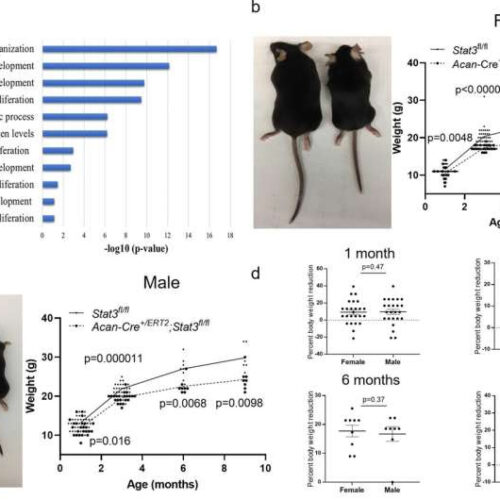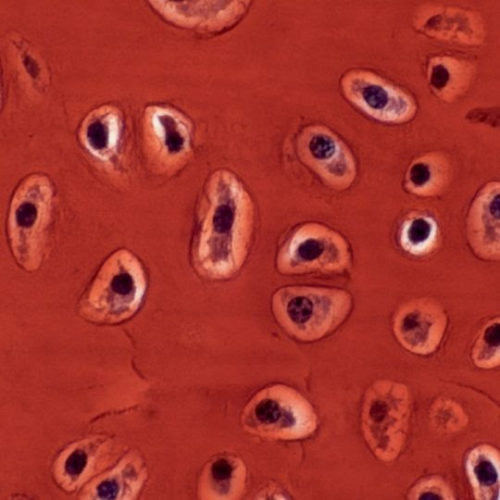by Kim Krieger, University of Connecticut a) Schematic illustration of the use of piezoelectric hydrogel for OA patients. The piezoelectric hydrogel contains piezoelectric short nanofibers of PLLA (NF-sPLLA) and a hydrogel matrix of collagen, which could be injected into knee joints by arthroscopy or X-ray guidance. The piezoelectric hydrogel is activated by an external US device...
Tag: <span>cartilage</span>
Sliding into place: Study shows how cartilage interacts with the joints in our bodies
This new study sets the stage for improved treatments for bone diseases and injuries, and demonstrates a valuable new research tool. Cartilage is a fascinating substance. It coats the ends of our bones, allowing them to glide by one another at joints like our elbows and our knees. The surface it creates is about five...
Arthritis-related gene also regenerates cartilage in joints and growth plates
JANUARY 17, 2022 by Cristy Lytal, University of Southern California Fig. 1: STAT3 regulates anabolic genes in human fetal chondrocytes and body size in mice. a Altered gene expression in human fetal chondrocytes after knockdown of STAT3 by shRNA in vitro as determined by bulk RNA-Seq and GO analysis; n = 3. Postnatal deletion of Stat3 in chondrocytes...
Simple test helps to predict and prevent falls
Scientists have developed a simple clinical test that can assess the lower limb strength of patients to predict their risk of falls. STAFFORDSHIRE UNIVERSITY DESIGNED BY STAFFORDSHIRE UNIVERSITY CARTOON AND COMIC ARTS STUDENT JOSH THOMAS WHO WON A COMPETITION TO ILLUSTRATE THE STUDY. view more CREDIT: STAFFORDSHIRE UNIVERSITY/JOSH THOMAS The “enhanced paper grip test” validated...
Improved MRI scans could aid in development of arthritis treatments
UNIVERSITY OF CAMBRIDGE An algorithm that analyses MRI images and automatically detects small changes in knee joints over time could be used in the development of new treatments for arthritis. A team of engineers, radiologists and physicians, led by the University of Cambridge, developed the algorithm, which builds a three-dimensional model of an individual’s knee...
Adult skates can spontaneously repair cartilage injuries
Researchers have found that adult skates have the ability to spontaneously repair injured cartilage, using a type of cartilage stem cell. Human cartilage has very limited capacity for repair, and the finding may lead to new stem cell treatments for human cartilage injuries. Published in the journal eLife, the study identified a new type of...
Magnetic Microbots Deliver Stem Cells to Heal Knee Cartilage
As has been widely hyped for many years now, mesenchymal stem cells have the capacity to heal all sorts of damage in our bodies. The reality has been more complicated, since it is actually very difficult to get these cells to perform their magic just where we want them to. Damaged cartilage, for example, doesn’t...
A joint effort to understand cartilage development
Anyone with arthritis can appreciate how useful it would be if scientists could grow cartilage in the lab. To this end, Keck School of Medicine of USC scientists in the USC Stem Cell laboratory of Denis Evseenko, MD, Ph.D., collaborated with colleagues at several institutions to provide new insights into how gene activity drives the...




